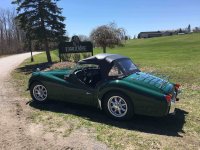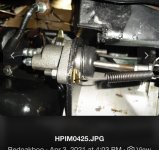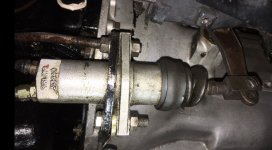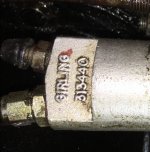My old dual master was rebuilt and then sat for 4 years. Once installed it bled by gravity without a hitch. Since the SC is new and the MC is rebuilt, let's look at the other possibilities:
First, the linkage between the top of the pedal and the MC, or push rod, must be adjusted so when the pedal is released the piston can return fully forward, or outward. The port the fluid must travel through is in the final >030" of travel, so any sticking of the piston or linkage adjustment preventing the piston from FULLY returning is enough to prevent bleeding or proper operation of the clutch.
Next, have you blown air through the hard and soft line to make sure there is no blockage in the lines? A crimp in the hard line, rust in the hard line, or deterioration inside the soft line can block the flow of fluid.
Is the bleed screw opening properly? I suggest completely removing the bleed screw and see if the fluid will run out.
Finally...how are the brakes working? They share the reservoir in the double MC. Did they bleed properly? Again, the brakes and clutch will bleed easily by gravity if everything is in order. Pumping can confuse you if you do it wrong. For example: If you wife mis-understands and releases the pedal before you have the bleed closed, you will simply suck more air into the lines. To prevent confusion, I would forget about pumping and just open the bleeder and wait. Attach a clear hose into a can , and wait for the bubbles to clear. Do not open the bleeder more than 1/2 turn ever, or you will suck air past the threads, which can also confuse the situation.
If you do the above, there is nothing else to go wrong except a bad rebuild on the MC. Again, are the brakes working? On my TR2 the bleeding was a non-event. All the work was in tweeking connections for the slow leaks here and there. I have never pumped the TR@ pedal to bleed, and I bleed every year to circulate fresh fluid through the systems.

 Hi Guest!
Hi Guest!

 smilie in place of the real @
smilie in place of the real @
 Pretty Please - add it to our Events forum(s) and add to the calendar! >>
Pretty Please - add it to our Events forum(s) and add to the calendar! >> 




